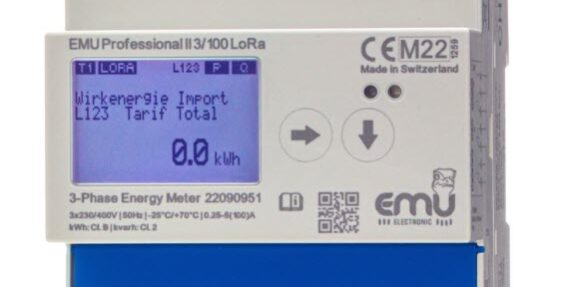Lorawan Electricity Meters: The Future of Smart Metering
Introduction
Electricity is a vital component of our daily lives, and we all rely on it to power our homes, businesses, and industries. However, with the increasing demand for energy, it has become essential to manage and monitor our electricity consumption effectively. That’s where smart meters come in. They allow us to track our energy usage, analyze it, and make informed decisions to reduce our carbon footprint and save on energy bills.
One of the most innovative and advanced types of smart meters is Lorawan electricity meters. In this article, we’ll take a closer look at what Lorawan electricity meters are, their features and benefits, and how they are transforming the way we consume and manage energy.
What are Lorawan Electricity Meters?
Lorawan (Low-Power, Long-Range Wide Area Network) electricity meters are a type of smart meter that uses the Lorawan network protocol to transmit data from the meter to the energy supplier. These meters are highly efficient and can transmit data over long distances, making them ideal for use in urban and rural areas.
Lorawan electricity meters can measure electricity consumption, production, and export, as well as other parameters such as voltage, current, and frequency. They can also communicate with other smart devices in the home, such as thermostats and appliances, to provide real-time energy data and control.
How Lorawan Electricity Meters Work
Lorawan electricity meters use a combination of hardware and software to collect, store and transmit data. The hardware component of the meter includes sensors, processors, and communication modules. The sensors collect data on electricity consumption and other parameters, which is processed by the meter’s internal processor. The communication module then transmits this data to the energy supplier or other smart devices in the home.
The software component of Lorawan electricity meters includes the network protocol, which governs how the data is transmitted and received. The Lorawan network protocol is a low-power, long-range wireless protocol that allows devices to communicate over distances of several kilometers, using very little power. This makes Lorawan electricity meters ideal for use in remote or hard-to-reach areas, where other communication methods may not be feasible.
Features and Benefits of Lorawan Electricity Meters
- Real-time data: Lorawan electricity meters provide real-time data on energy consumption, which allows consumers to monitor their usage and make informed decisions about their energy use.
- Remote monitoring: Energy suppliers can remotely monitor electricity usage and detect any anomalies, such as power outages or irregular consumption patterns.
- Cost savings: By monitoring energy usage, consumers can identify areas where they can save on energy costs and reduce their carbon footprint.
- Secure data transmission: Lorawan electricity meters use advanced encryption and security protocols to ensure that data is transmitted securely and cannot be intercepted by unauthorized parties.
- Long battery life: Lorawan electricity meters have a long battery life,which means they require less maintenance and can be used in remote or hard-to-reach areas without frequent battery replacement.
Use Cases of Lorawan Electricity Meters
Lorawan electricity meters have a wide range of use cases in both residential and commercial settings. Some of the most common applications of Lorawan electricity meters include:
- Residential energy monitoring: Lorawan electricity meters can be used to monitor energy consumption in residential homes, allowing homeowners to identify areas where they can reduce energy use and save on costs.
- Industrial energy management: Lorawan electricity meters can also be used in industrial settings to monitor energy consumption and identify inefficiencies in energy use. This can help companies reduce their carbon footprint and save on energy costs.
- Smart city infrastructure: Lorawan electricity meters can be used to monitor and manage energy use in smart city infrastructure, such as streetlights, traffic lights, and public transportation.
- Renewable energy monitoring: Lorawan electricity meters can also be used to monitor the production and export of renewable energy sources, such as solar panels and wind turbines.
FAQs about Lorawan Electricity Meters
- Q: How do Lorawan electricity meters differ from other types of smart meters?
- A: Lorawan electricity meters use the Lorawan network protocol to transmit data, which allows them to communicate over long distances using very little power. This makes them ideal for use in remote or hard-to-reach areas.
- Q: Can I use a Lorawan electricity meter in my home?
- A: Yes, Lorawan electricity meters are designed for use in residential homes, as well as commercial and industrial settings.
- Q: What are the benefits of using a Lorawan electricity meter?
- A: Lorawan electricity meters provide real-time data on energy consumption, which allows consumers to monitor their usage and make informed decisions about their energy use. They also offer long battery life, secure data transmission, and cost savings.
- Q: Can Lorawan electricity meters be integrated with other smart home devices?
- A: Yes, Lorawan electricity meters can be integrated with other smart home devices, such as thermostats and appliances, to provide real-time energy data and control.
Conclusion
Lorawan electricity meters are a game-changer in the world of smart metering. They offer real-time data, secure transmission, and long battery life, making them an attractive option for energy suppliers and consumers alike. With their ability to communicate over long distances, Lorawan electricity meters are ideal for use in remote or hard-to-reach areas, as well as in industrial and smart city applications. As the demand for energy continues to grow, Lorawan electricity meters will play a vital role in helping us manage and monitor our electricity consumption effectively.






